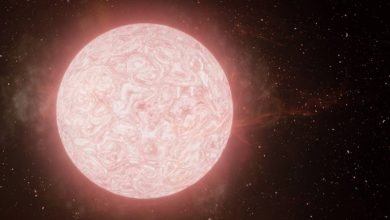Life on Mars? NASA research hints at possible alien presence on the red planet | Technology News

The possibility of extraterrestrial life has confounded mankind for centuries. With technological advancements, astronomers and scientists are indeed using the best of innovation to trace any signs of life, but nothing has bore fruit yet. However, some new research seems to state that we may be closer to cracking this mystery of a lifetime.
The new Nasa research suggests that conditions for photosynthesis may exist below the dusty ice at Mars’ mid-latitudes regions. For the uninitiated, mid-latitudes of Mars are essentially areas between 30 degrees and 60 degrees latitude in both hemispheres. These regions are believed to contain a lot of water ice in the subsurface, preserved under lithic materials that can be thick by several meters.
Photosynthesis is essentially a process that lets plants, algae, and some bacteria convert sunlight into carbon dioxide, and water into oxygen and glucose. Photosynthesis is responsible for generating much of Earth’s atmospheric oxygen. The research proposes that an adequately thick layer of ics on Mars may work as a shield against the Sun’s hash radiation at the same time allowing enough light for photosynthesis leading to the creation of ‘radiative habitable zones’.
The paper’s lead author, Aditya Khuller of Nasa’s Jet Propulsion Laboratory, said that if we are to find life anywhere in the universe today, the Martian ice exposures are probably one of the most accessible places.
The research does not explicitly state that life exists or ever existed on the planet. However, the study offers some new insights into possible areas to explore. “We are not stating we have found life on Mars, but instead we believe that dusty Martian ice exposures in the mid-latitudes represent the most easily accessible places to search for Martian life today,” Khuller was quoted as saying by Space.com.
Earth and Mars exist in the ‘habitable zone’ of the Sun with temperatures that allow for water to exist. Earth has oceans covering over 70 per cent of its surface, however, Mars remains dry. Nasa’s Mars missions have earlier shown proof of ancient liquid water on the red planet. These were gauged from the dry lake beds, and presence of water ice in unexplored areas.
According to scientists, Mars lost its liquid water billions of years ago after its magnetic field collapsed exposing it to harsh ultraviolet radiation. Mars has the presence of 30 per cent more harmful ultraviolet rays, as it does not have a protective shield like Earth’s ozone layer.
Story continues below this ad
Computer simulations, as part of the study, showed that the dusty ice on Mars may melt internally with overlying ice preventing subsurface liquid water from vapourising. Khuller noted that sunlight and liquid water, two key ingredients for photosynthesis, could exist just below the ice.
© IE Online Media Services Pvt Ltd




